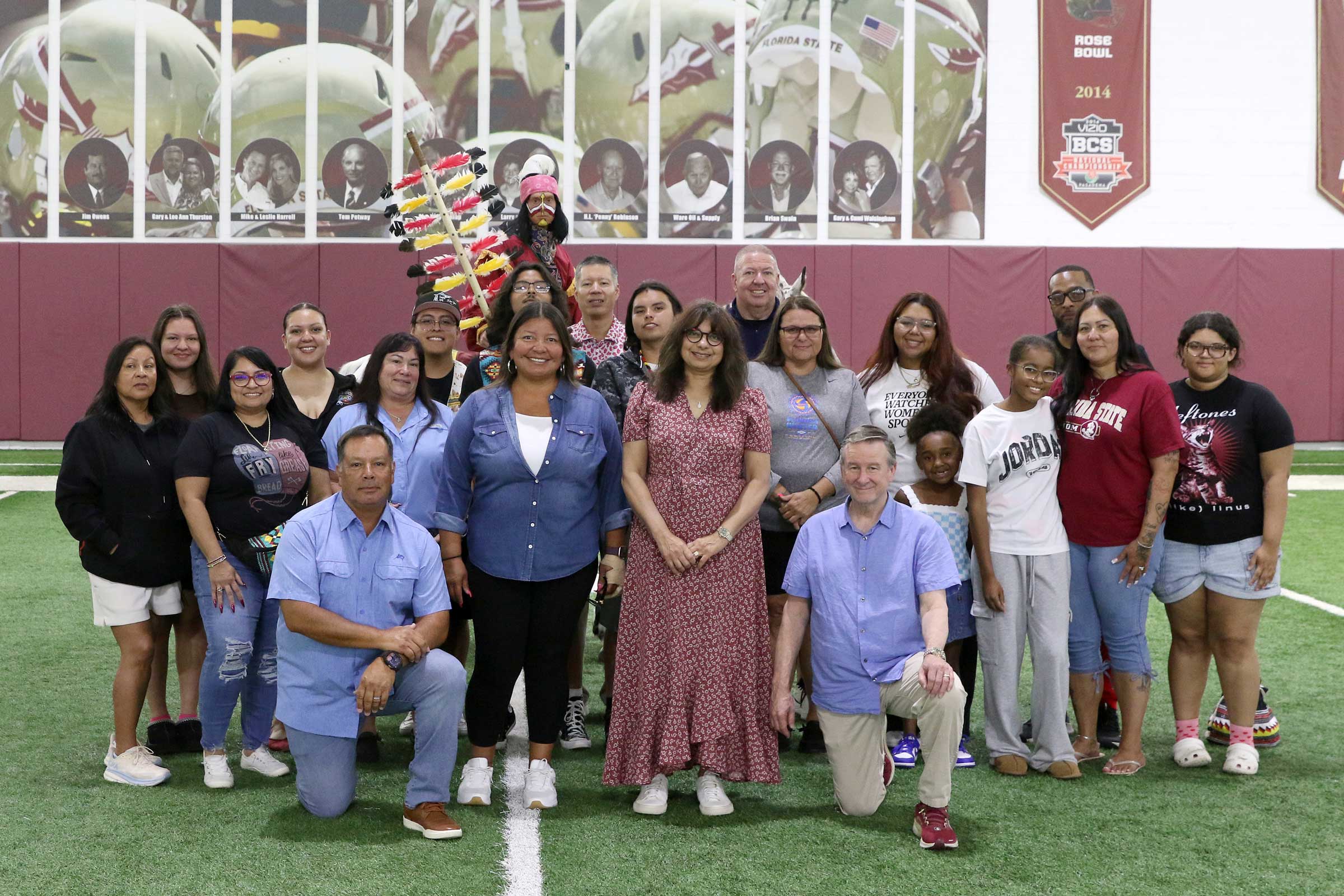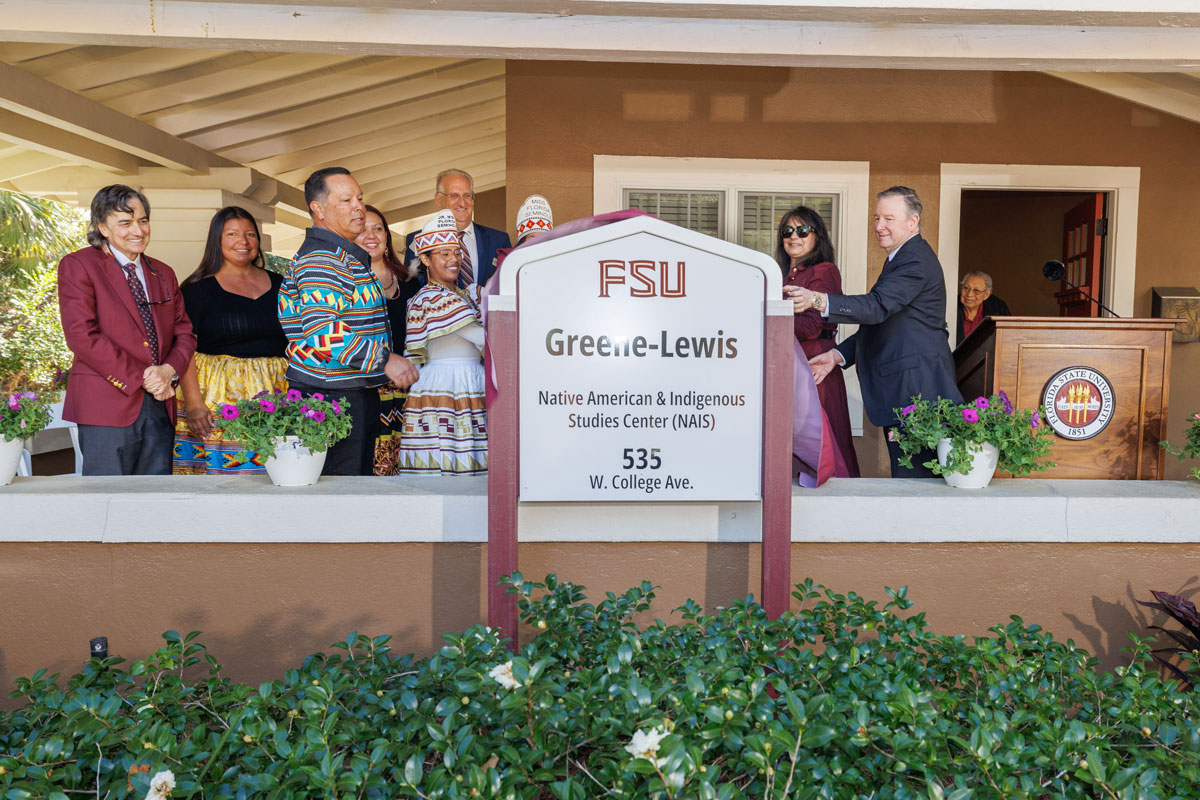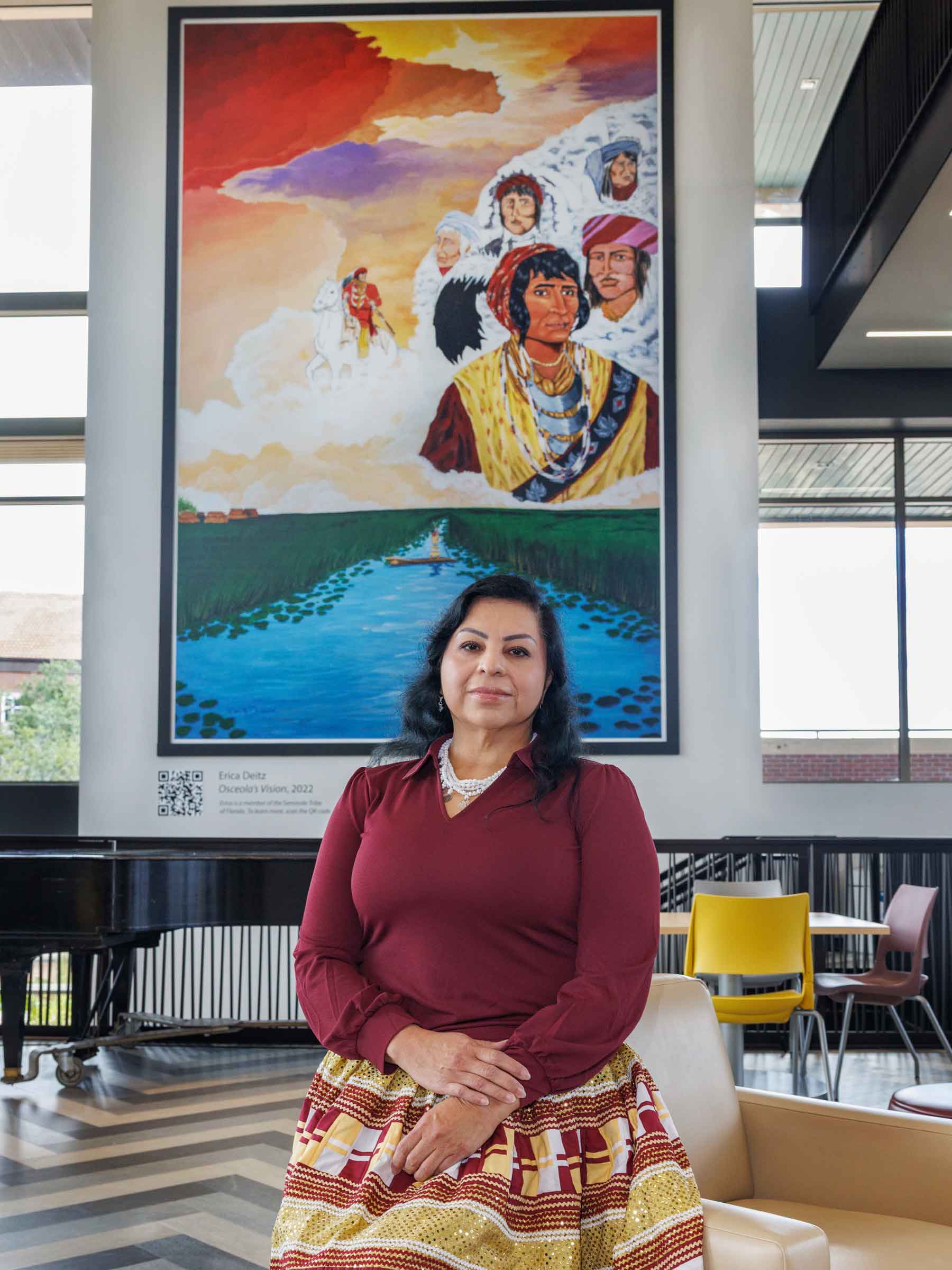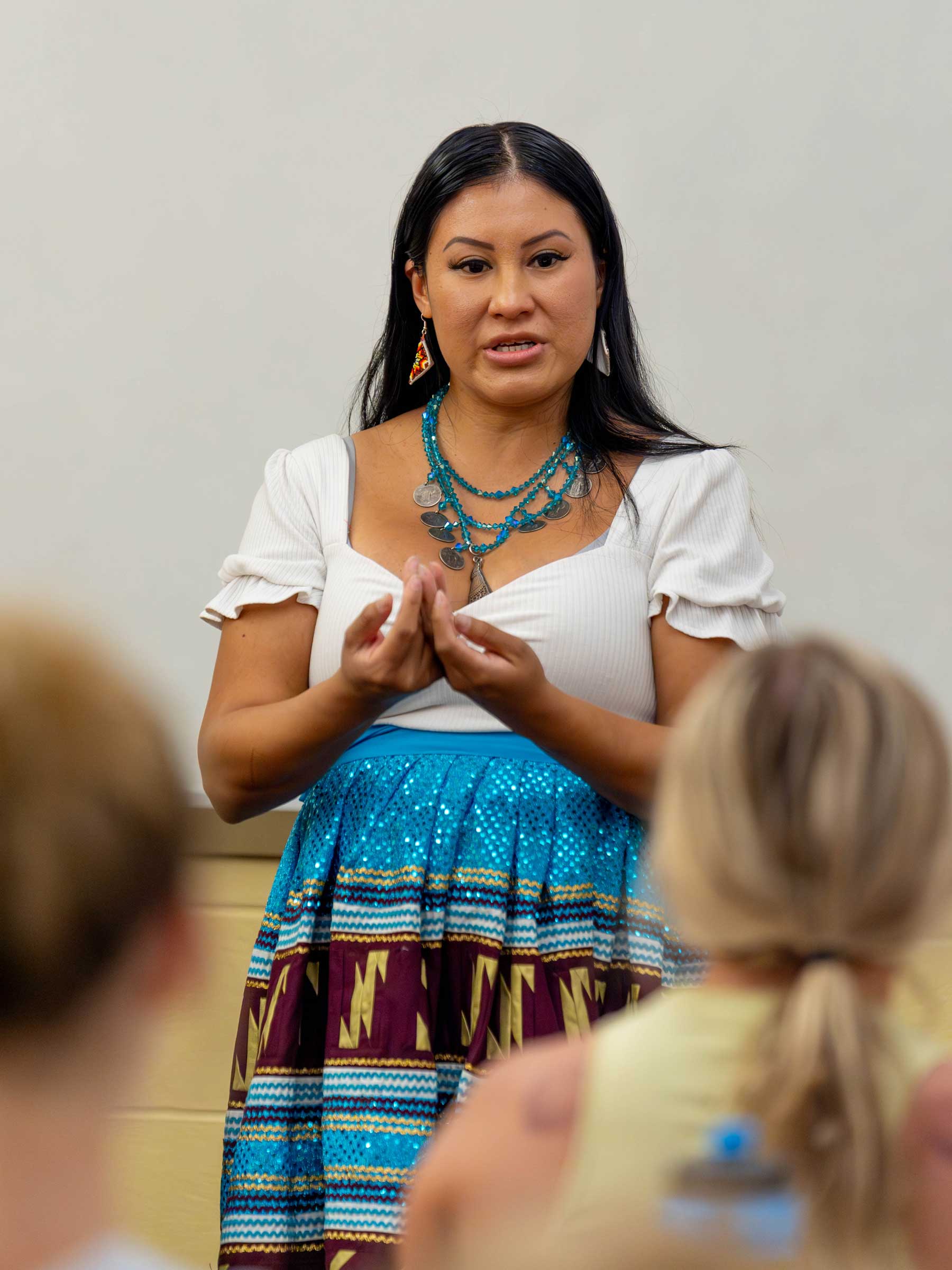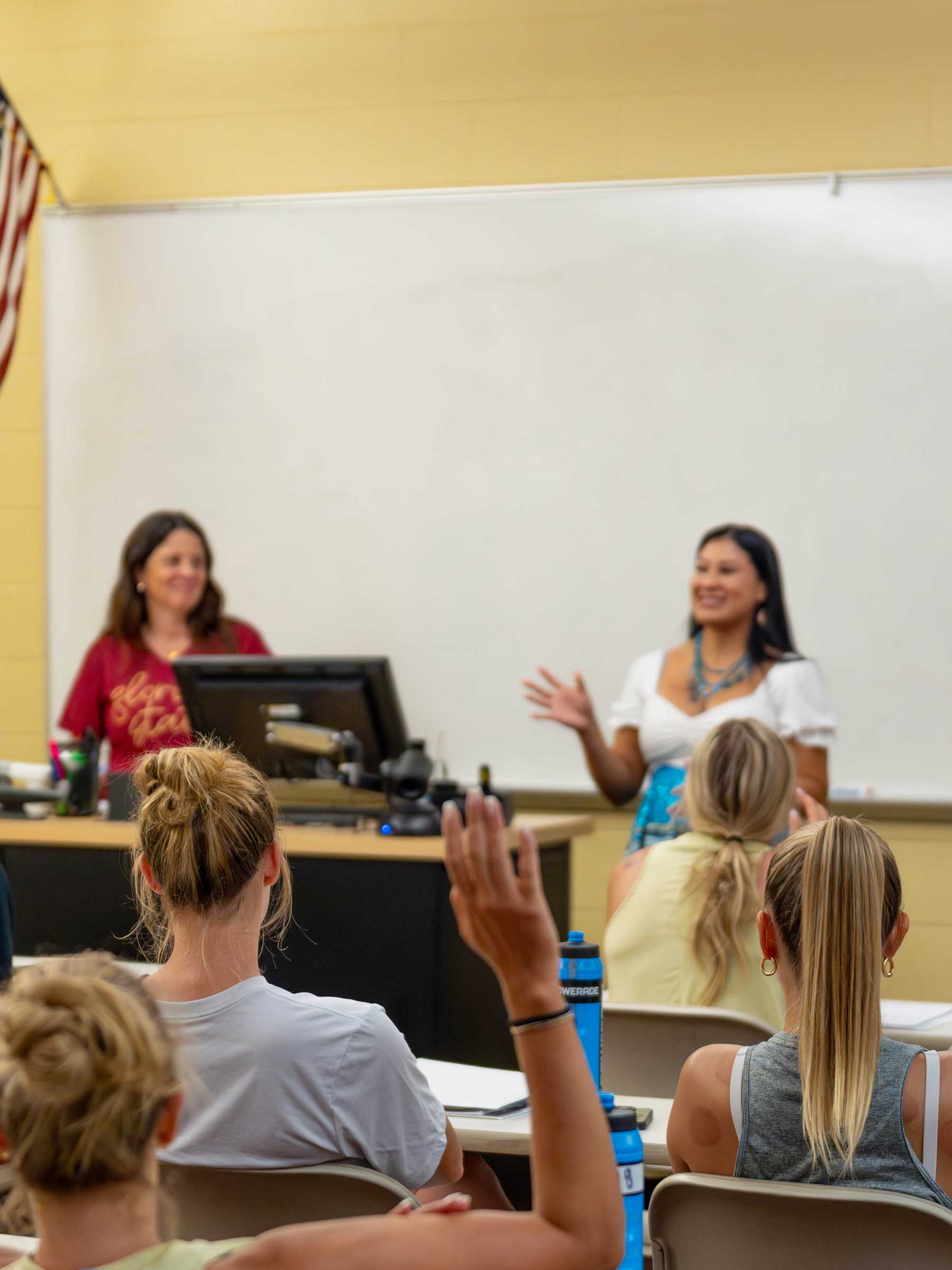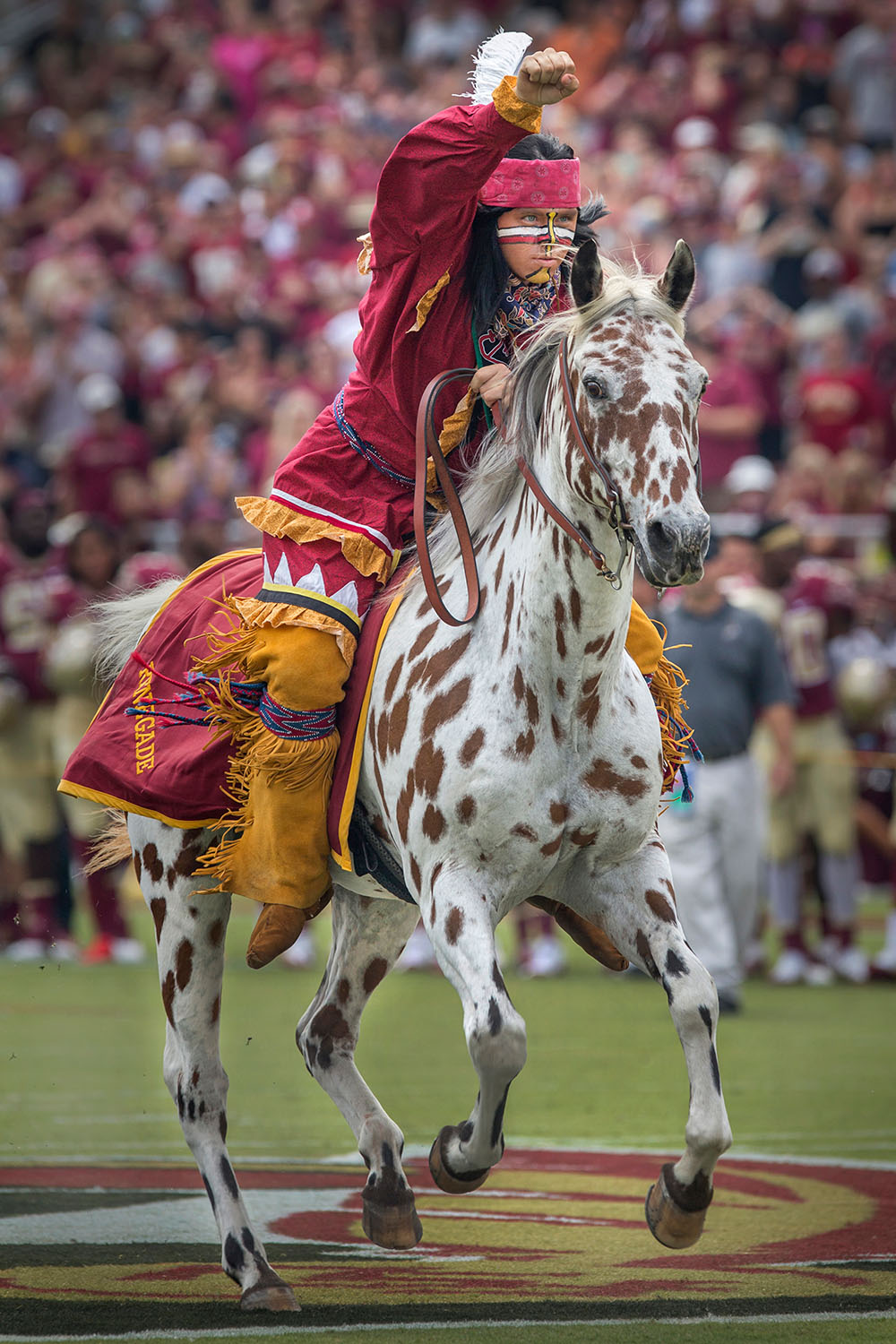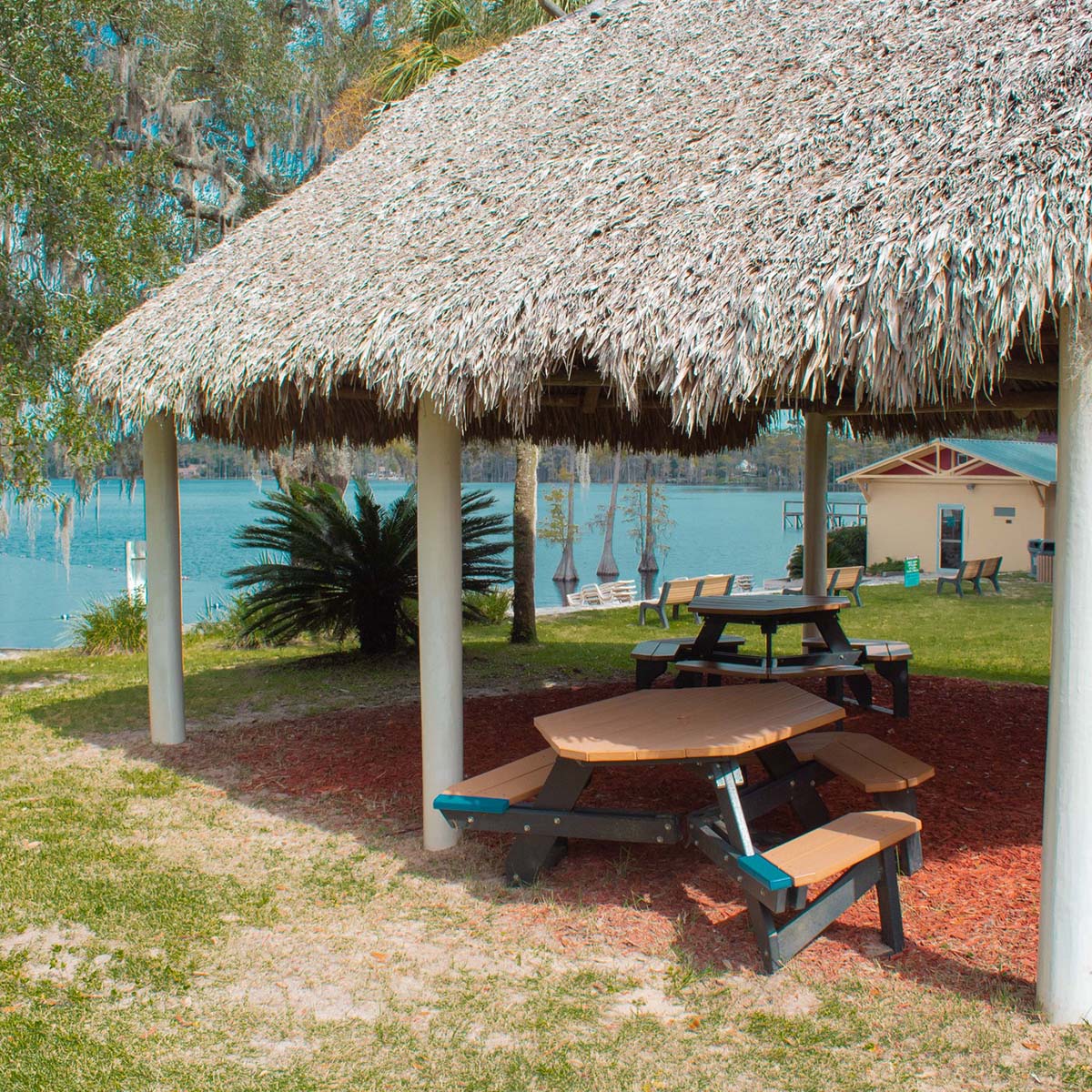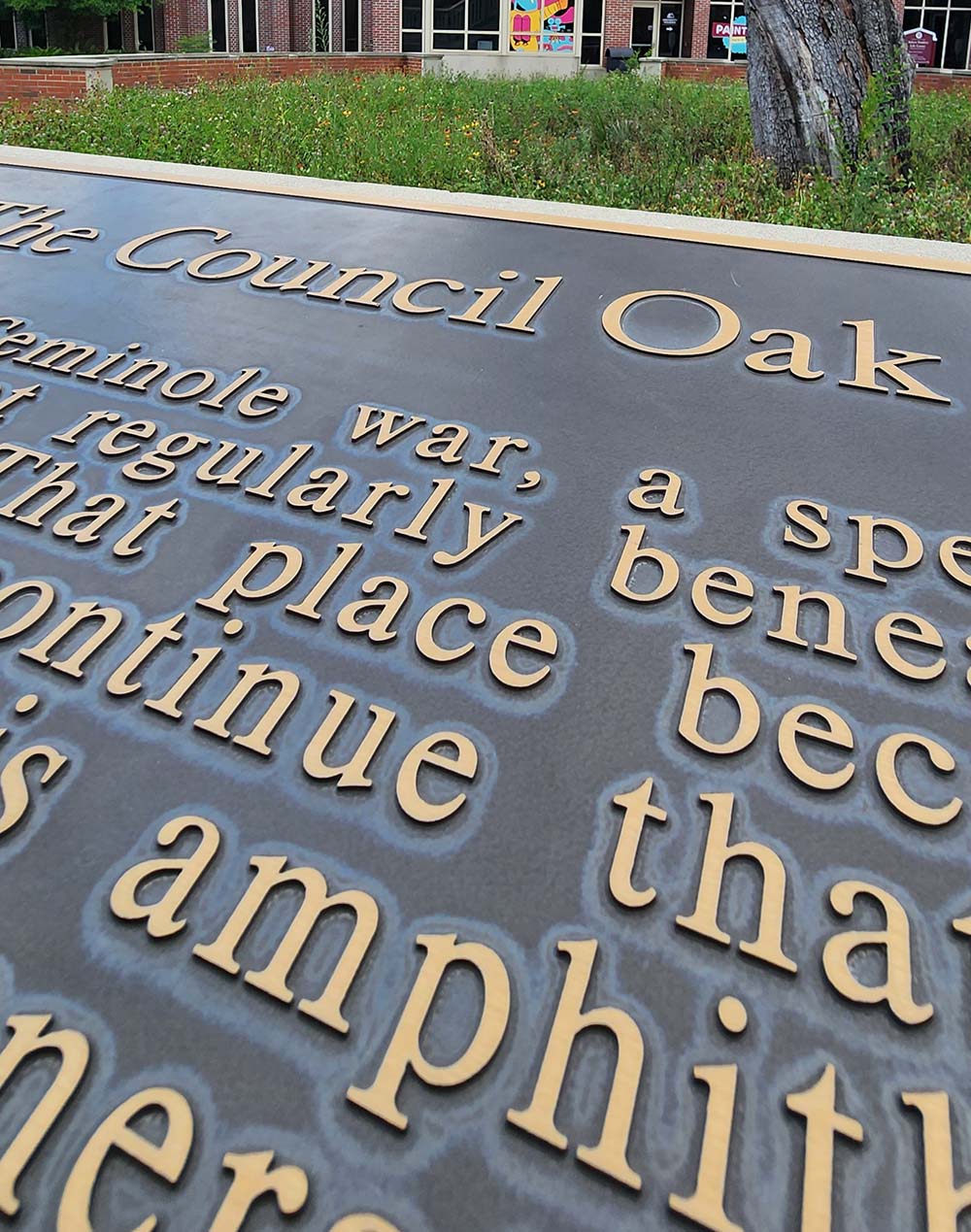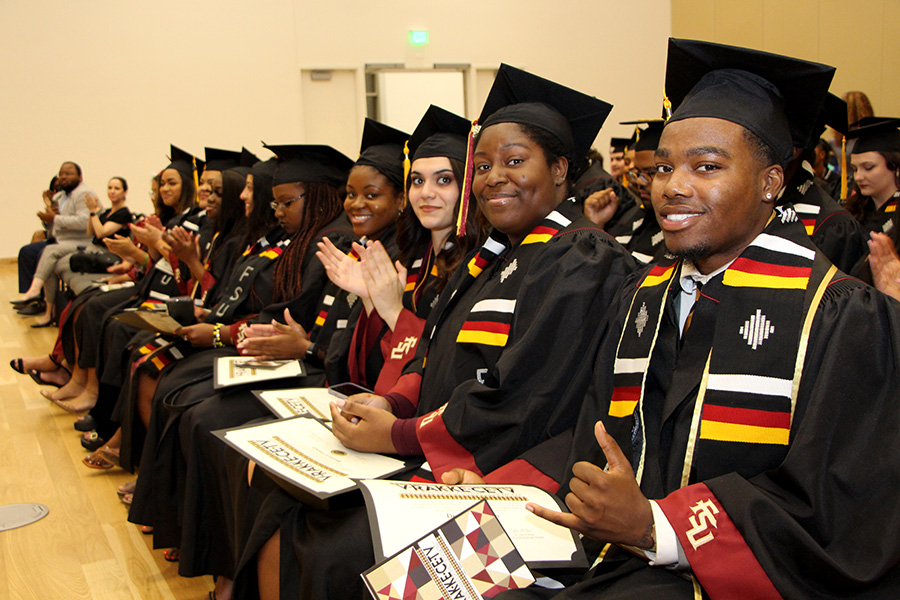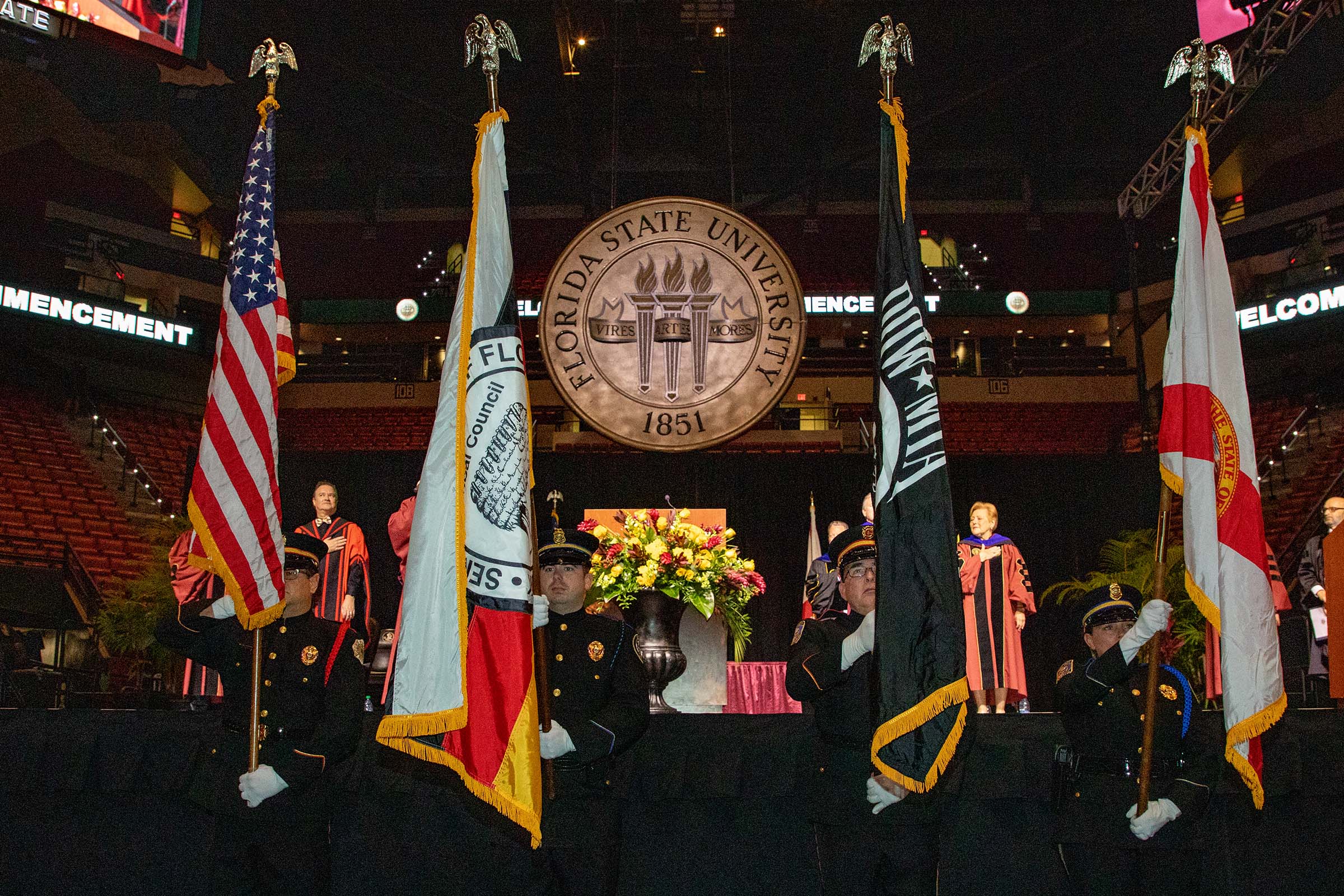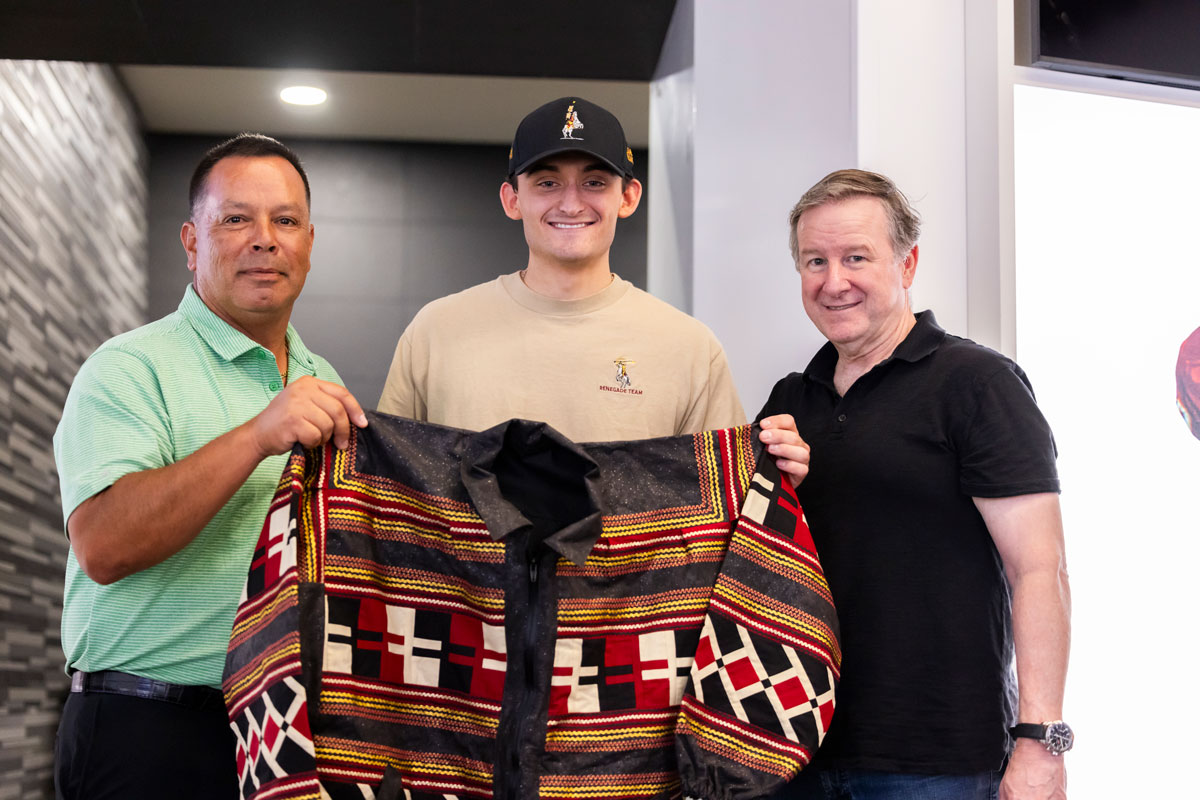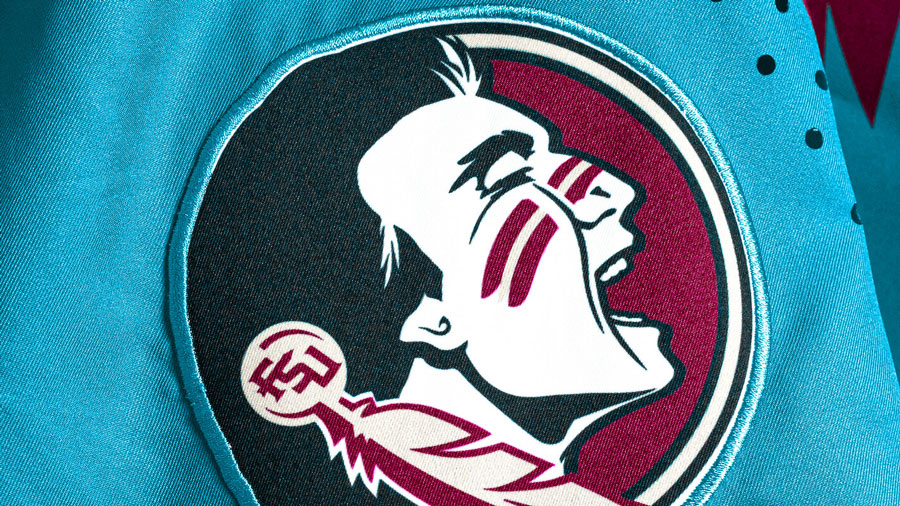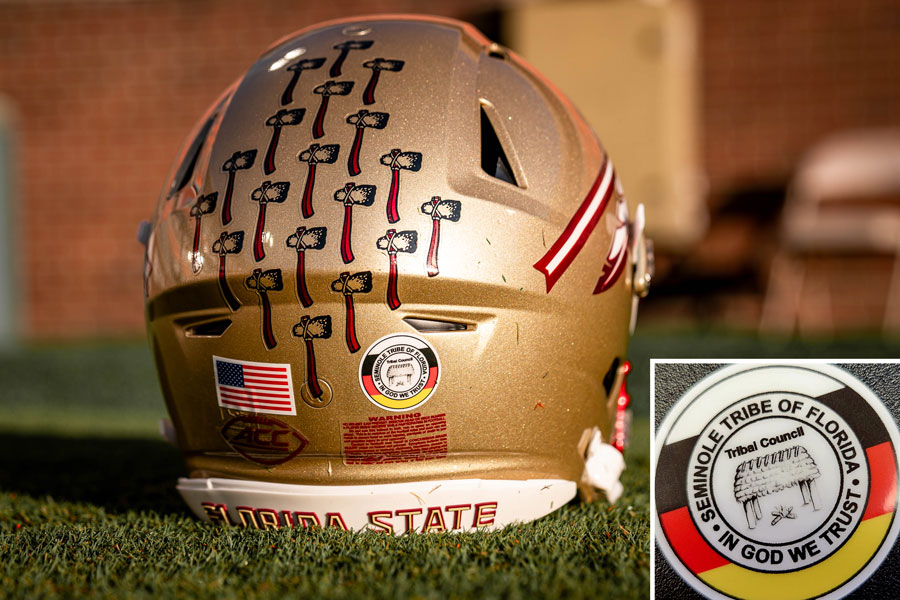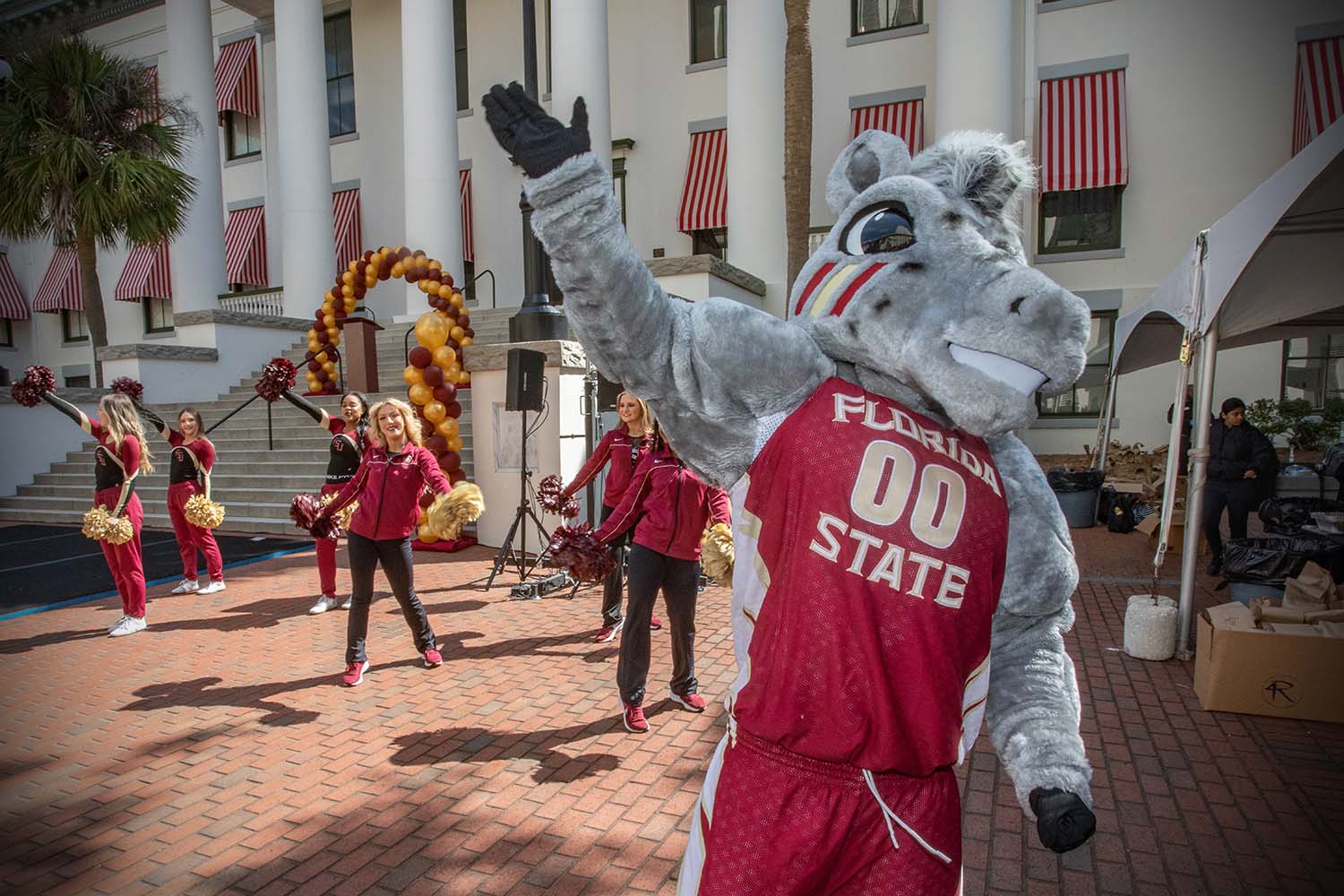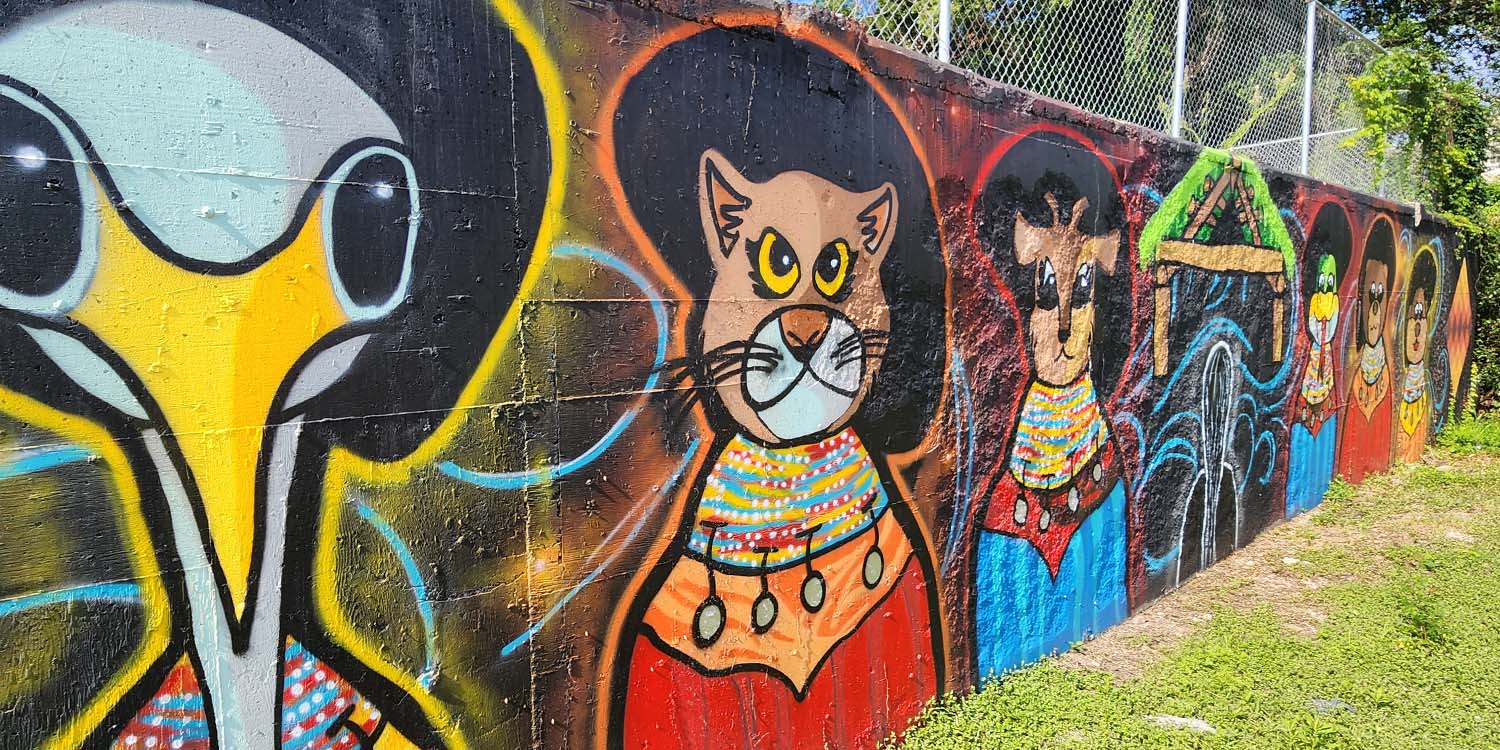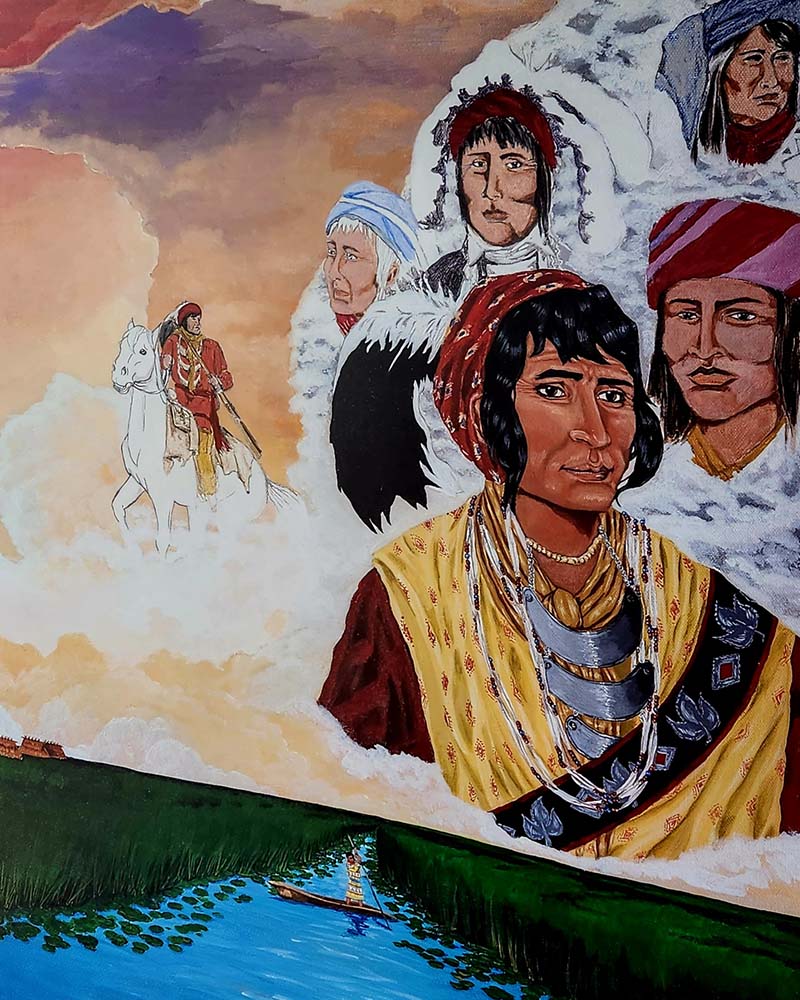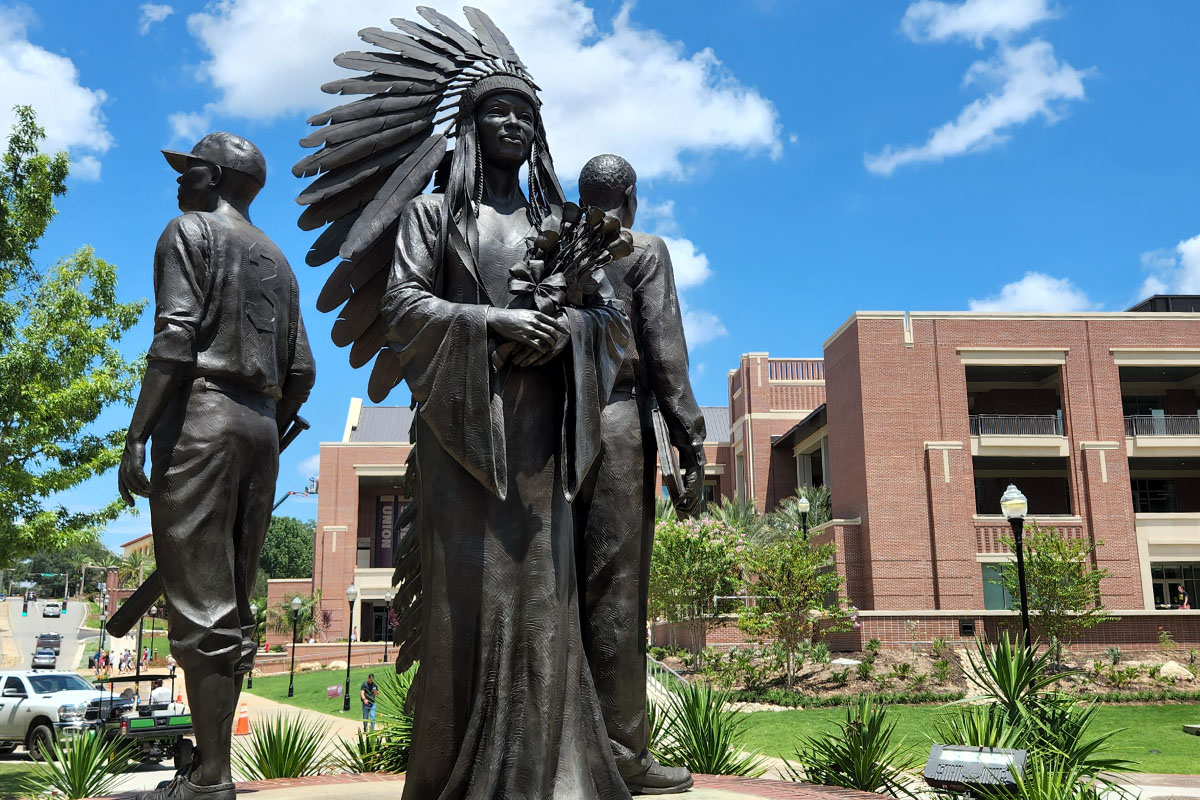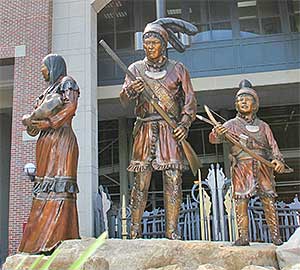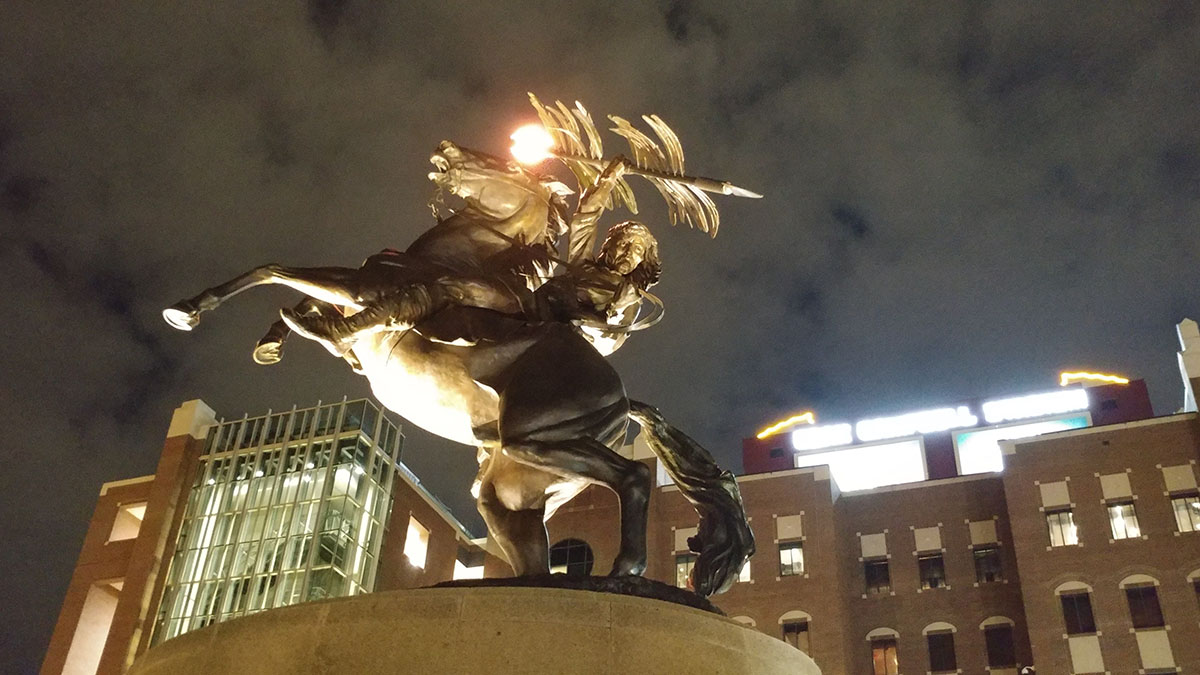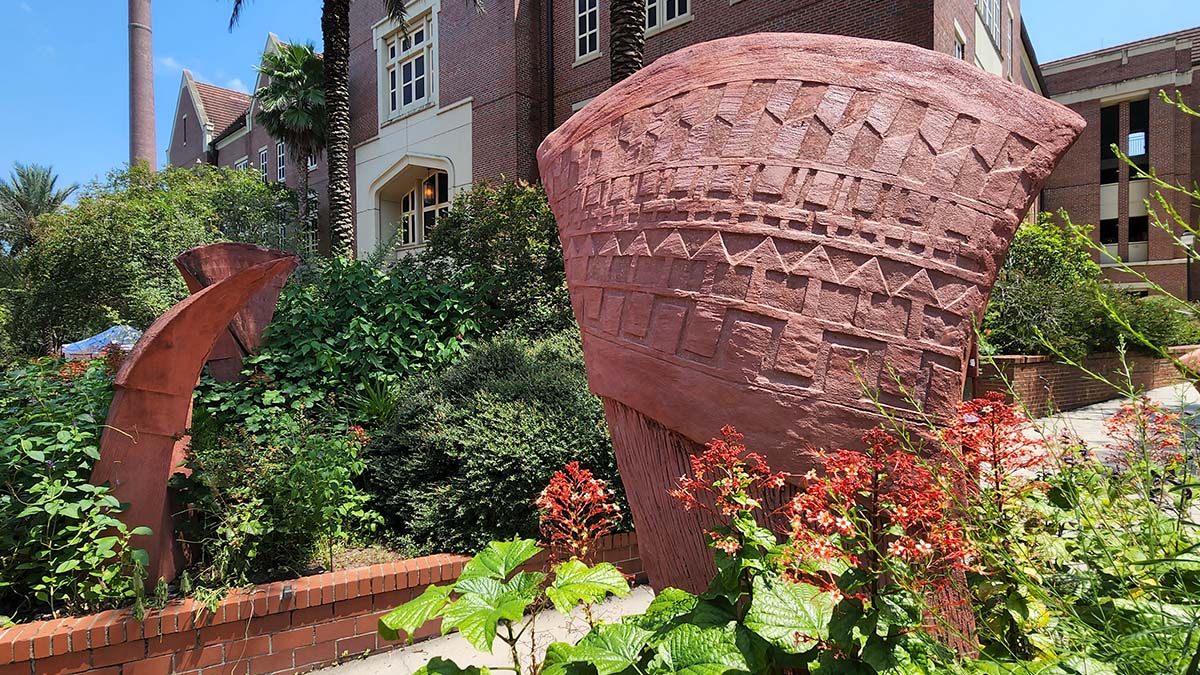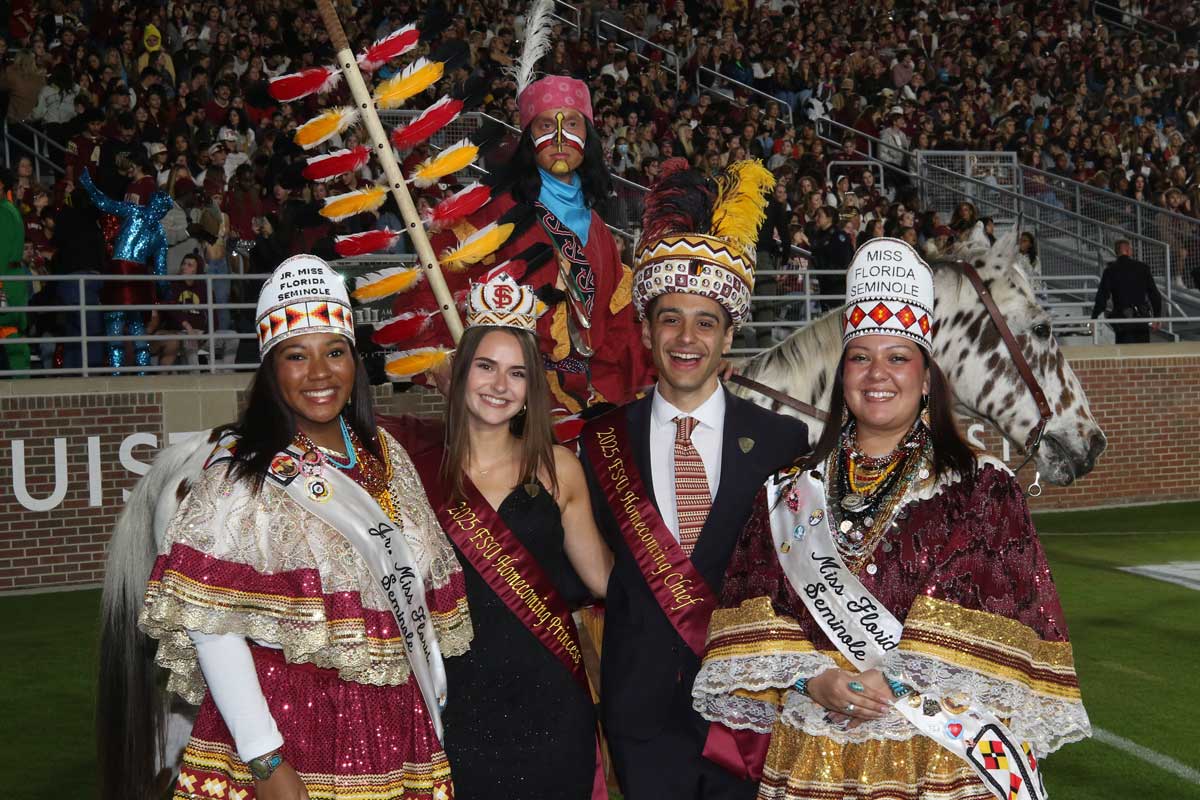Seminole Presence on Campus
Seminole Tribe of Florida Chairman Marcellus Osceola Jr., and members of the tribe on their annual senior trip to FSU, July 2025.
FSU continues to constantly collaborate and converse with the Seminole Tribe of Florida regarding symbolic representation across campus.
FSU dedicates the new home of its Native American and Indigenous Studies Center, bringing together FSU administrators, faculty and trustees and members of the Seminole Tribe of Florida for a special celebration during Homecoming Week, November 22, 2024.
Artist and Seminole Tribe of Florida member Erica Deitz pictured with her mural, “Osceola’s Vision” inside the FSU Student Union, September 2025.
FSU student athletes learn about Seminole culture from Seminole Tribe of Florida member JoJo Osceola, July 2025.
Osceola & Renegade
The creation of FSU’s Osceola and Renegade tradition began when FSU supporter and alumnus, Bill Durham, pitched the idea to head football coach Bobby Bowden in the mid 1970s and was met with great enthusiasm. Durham then met with Howard Tommie, then chairman of the Seminole Tribe of Florida, who did more than just sanction the tradition. Tommie arranged to have tribal members design the clothing worn by the FSU student depicting Osceola and created the parameters that control how and where Osceola and Renegade can appear today. Today, Seminole women still design and produce this clothing to approximate what Osceola wore in a nineteenth-century portrait, including the long shirt, color scheme, metal gorgets, and headwear. Other parts of Osceola’s portrayal carry little connection to the life of Seminole people or Osceola the warrior. These alterations, including the face paint, occur with Seminole sanction. "Those little differences don't bother us," Jim Shore, citizen and legal counsel for the Seminole Tribe of Florida, explained in 2005. "An (actual) Seminole warrior of the 1800s couldn't be depicted in modern time. But this character has a great resemblance to what he should be. It's modernized, not theatrical. The school has checked with us, over and over again. And we have no objections to how he's portrayed. It's always respectful."
Chickees at the Lakefront
In 2006, representatives from the Seminole Tribe of Florida built a traditional chickee at the then-named “FSU Reservation,” now called “Lakefront Park.” The chickee, which means house in Seminole, was built in the same way that Seminoles have historically built them and continue to build them in the communities and elsewhere.
Estonko
Estonko (pronounced Es-ton-GO) is the Seminole Creek word offered in greeting and serves as the namesake of the FSU Center for Leadership & Service’s welcome celebration. This program has been developed in partnership with members of the Seminole Tribe of Florida and serves to welcome students back to campus each fall.
Estonko takes place at The Council Oak, in the Commons Courtyard on campus, where we highlight a connection to the Council Oak story within Seminole culture. This story teaches that a special generation of Seminole leaders, children of the last generation who hid in the swamps, began to meet regularly beneath a huge oak tree on the Hollywood reservation. These leaders are said to have fanned the dying Seminole embers back into flame. By 1957, after numerous community meetings, a constitution was forged establishing a two-tiered tribal government. That same year, the U.S. government officially recognized the unconquered Seminole Tribe of Florida.
The Council Oak reminds us of the importance of establishing community, organizing our leadership for good, and the value of preserving the Seminole identity.
V-rak-ke-ce-tv Cultural Graduation Ceremony
FSU’s Cultural Graduation Ceremony is proud to use the name “V-rak-ke-ce-tv", a Seminole Creek phrase meaning "to honor." This ceremony honors graduating students’ accomplishments through their journey at FSU, their families and friends for their continued support, and the tradition of partnership between FSU and the Seminole Tribe of Florida.
Seminole Tribe of Florida Color Guard
Seminole Tribal members serve as the color guard at every commencement ceremony at FSU as well as at other ceremonies held by the university.
Patchwork
The Florida Seminoles wear a unique form of patchwork clothing that is an integral part of their culture. FSU pays homage to this distinctively Seminole art form by including monochromatic patchwork designs across campus, including some public pieces of art and on athletic uniforms. While not actual patchwork, you will see patchwork inspired textiles on the exterior of the Champions Club at the FSU Football Stadium.
Honoring Seminole Heritage
Representing harmony, friendship, and fellowship throughout Native American communities, the color turquoise is used in tribute to the university's special friendship with the Seminole Tribe of Florida. FSU athletics competitions that feature turquoise are known as Seminole Heritage games in honor of our long-standing relationship with the Seminole Tribe of Florida.
Seminole Tribe of Florida helmet stickers are being worn again for the 2023 football season in honor of the Tribe.
Cimarron
FSU uses the Seminole-inspired Cimarron to cheer on its athletic teams as part of FSU Kid’s Club. Cimarron’s name reflects the word that eighteenth-century Spaniards used to describe the Indigenous people in Florida who were not under the control of the Creek nation to the north or the Spanish, English, or U.S. governments in Florida and elsewhere. Outsiders used the word Cimarron, or Seminole, to signify the wild and independent character of the Florida Seminoles.
Campus Artwork
One of the many ways that we honor our connection to the history of the Seminole People is by incorporating Seminole art and culture throughout campus. In 2022, Seminole artists Wilson Bowers and Samuel Tommie created a 135-feet long mural on Macomb Street to honor Seminole history and culture. The painting reveals a traditional creation story for the Seminole People—with depictions of the eight clans, patchwork clothing, a chickee, and the tribal colors. Additionally, the new student union features the artwork of Seminole artist, Erica Deitz.
Integration Statue
In 2003, FSU introduced the Integration Statue to commemorate the desegregation of the university in 1962. The statue honors Maxwell Courtney (the first African American to graduate from FSU), Fred Flowers (the first African American student-athlete at FSU), and Doby Flowers (the first African American to be homecoming princess). The statue's depiction of Ms. Flowers includes the war bonnet that was used to crown the homecoming queen until 1977 when the Seminole Tribe created more appropriate and authentic turbans for the university to use.
Seminole Family Statue
Located outside of University Center A at Doak Campbell Stadium, "The Seminole Family" represents a family of Seminoles who are fleeing the United States during the Seminole War. This statue was designed and created by Bradley Cooley and Bradley Cooley Jr. of Lamont, Florida, and was unveiled in 2006.
The Unconquered Statue
“Unconquered” honors the unconquered spirit of the Seminole people and those who have adopted that spirit. This bronze statue was designed by Fritz White and dedicated in 2003.
The massive structure, including its granite-covered pedestal base, stands approximately 31 feet and depicts a spear-brandishing Seminole warrior colloquially referred to as Osceola, astride a rearing horse often called Renegade. At sunset the night before each home game, the spear is ignited and burns until sunrise the morning after the game.
“The Dancers”
Located outside of the Student Services Building (SSB) along Legacy Walk, many assume these large garnet sculptures to be Seminole artwork, but they are not actually crafted by Seminole artists. In 2005, artists Harry McDaniel unveiled The Dancers, crafted from pigmented cement and steel. McDaniel says that the carvings are inspired by native dance and the designs found in Seminole Patchwork.
FSU Homecoming
Jr. Miss Florida Seminole 2025-2026 Chaka Yani Smith & Miss Florida Seminole 2025-2026 Bailey Marie Latchford with FSU’s 2025 Homecoming Chief and Princess, November 1, 2025.
For several decades, the Tribe's own Miss Florida Seminole and Jr. Miss Florida Seminole have graciously participated in the homecoming festivities. They crown the court with turbans created by Seminole women and present them with wood carvings that are also created by Tribal members.

